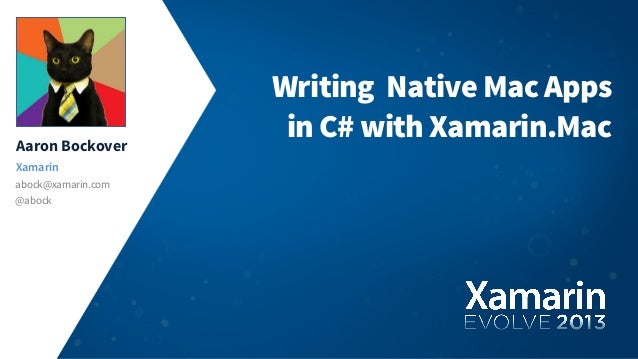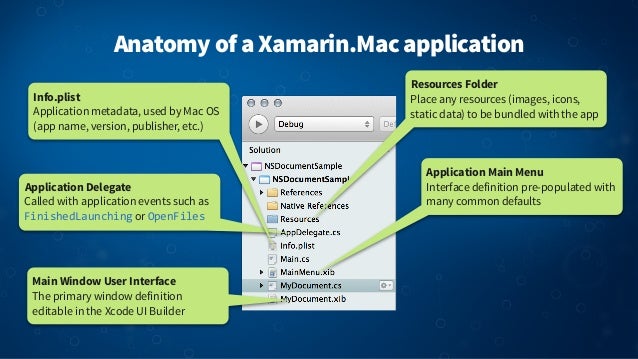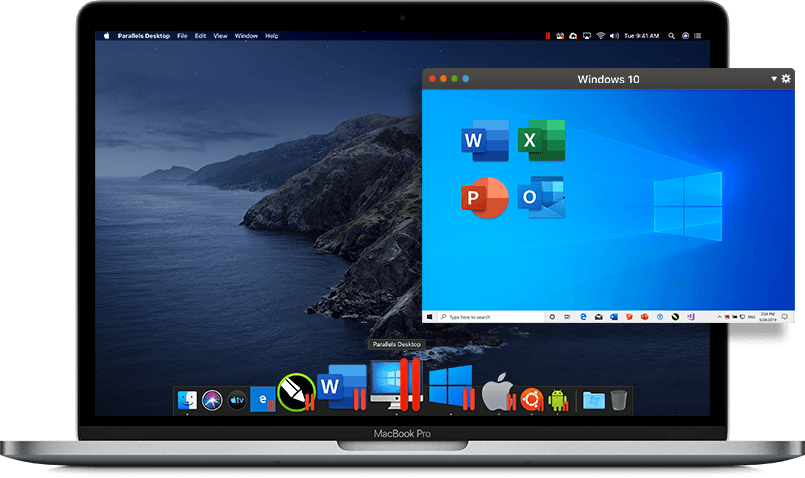- A native app is compatible with a device's hardware and native features, such as an accelerometer, camera, and more. This way, a developer can incorporate these features into an app. Users download native apps from an app store or online marketplaces such as the Apple App.
- Choosing a Native Application Environment. In the context of this document, Carbon, Cocoa, and Java are presented as a way to write a GUI wrapper for a UNIX-based tool. Writing to these environments lets you build an application that is indistinguishable from any other native Mac app.
- Native Mac App With Computer
- Native Mac App With Chrome
- Native Mac App With C X
- Native Mac App With C T
As mentioned above, Apple’s Xcode is a free, full featured IDE for native apps. However, it’s not very hard to press it into service for beginning C code on a Mac, and it includes a GUI.
OS X includes three high-level native development environments that you can use for your application’s graphical user interface: Carbon, Cocoa, and Java. These environments are full-featured development environments in their own right, and you can write complete applications in any one of these environments.
In addition to these technologies, you can also use OpenGL, X11, Qt, Tcl/Tk, wxWidgets, and a number of other traditional UNIX graphics technologies when writing applications for OS X. In each case, there are tradeoffs. This chapter explains these tradeoffs and shows how they affect you as a programmer as well as your users.
Choosing a Native Application Environment
In the context of this document, Carbon, Cocoa, and Java are presented as a way to write a GUI wrapper for a UNIX-based tool.
Writing to these environments lets you build an application that is indistinguishable from any other native Mac app. The Java or Cocoa frameworks are probably the environments that you will use in bringing UNIX applications to OS X, although the Carbon frameworks are used by some developers. The following sections outline all three.
A good general rule is that if you decide to port your application from X11 to a native GUI environment, Carbon is a good choice for C and other procedural X11 applications, while Cocoa is a good choice if your application uses high-level toolkits such as Tcl/Tk or Qt. Cocoa is also a good choice for wrapping command-line applications with a GUI.
If you decide to port your cross-platform application to a native OS X GUI environment, you should carefully consider how best to do this port in a way that is maintainable. For some helpful tips, you should also read (Re)designing for Portability.
Cocoa
Cocoa is an object-oriented framework that incorporates many of OS X’s greatest strengths. Based on the highly-respected OpenStep frameworks, it allows for rapid development and deployment with both its object-oriented design and integration with the OS X development tools. Cocoa is divided into two major parts: Foundation and the Application Kit. Foundation provides the fundamental classes that define data types and collections; it also provides classes to access basic system information like dates and communication ports. The Application Kit builds on that by giving you the classes you need to implement graphical event-driven user interfaces.
Cocoa also provides file system abstraction that makes things such as file browsers look like Mac users expect. If you are developing a commercial application, you should use these. If you are developing an in-house application that will largely be used by people familiar with UNIX, the layout may be confusing, so these APIs may not be appropriate. See Presenting File Open and Save Dialog Boxes for more information.

The native language for Cocoa is Objective-C, which provides object-oriented extensions to standard C and Objective-C++. The Objective-C Programming Language describes the grammar of Objective-C and presents the concepts behind it. Objective-C is supported in gcc 2.95 and 3. Most of the Cocoa API is also accessible through Java. Cocoa is also the basis for AppleScript Studio, an application environment for script-based GUI development.
Additional Cocoa information, including sample code, can be found at http://developer.apple.com/. Cocoa documentation including tutorials is available at http://developer.apple.com/.
Benefits of Cocoa Development
Rapid development environment
Object-oriented framework design
Excellent integration with OS X developer tools
Very robust feature set
Can take advantage of existing C, C++, Objective-C, and Java code
Similar level of abstraction to high level toolkits such as Qt, Tcl/Tk, and so on
Drawbacks of Cocoa Development
Cross-platform deployment requires having a separate, non-Cocoa code base for the GUI portion
Requires integrating Java, Objective C, or Objective C++ into your code base for the GUI layer
Requires knowledge of Java, Objective C, or Objective C++
Very different level of abstraction from raw X11 programming
Potential performance penalties if used incorrectly
Example: Calling C or C++ Code With Cocoa
When designing an application from the ground up in Cocoa, you are in an object-oriented environment. You can also take advantage of Cocoa’s object-oriented nature when converting preexisting code, as you can use the Cocoa frameworks to wrap the functionality of C or C++ code.
The Objective-C language has been extended to understand C++. Often this is called Objective-C++, but the functionality remains basically the same. Because Cocoa understands Objective-C++, you can call native C and C++ code from Cocoa. This is one example of how you can take advantage of your code base while adding a Macintosh front end. An example is provided below of how Objective-C wraps together C, C++, and Objective-C++ functionality. Listing 4-1 shows the Objective-C main class.
Listing 4-1main.m
This gets everything started when the user double-clicks the application icon. A call is then sent to invoke a HelloController object by the NIB, a file that holds interface information. The listings for HelloController.m and HelloController.h follow.
Listing 4-2HelloController.m
Listing 4-3HelloController.h
The communication between the C, C++, and the Objective-C code is handled as shown in Listing 4-4. The header file SayHello.h is shown in Listing 4-5.
Listing 4-4SayHello.mm
Listing 4-5SayHello.h
The C++ class wrapped by these Cocoa calls is shown in Listing 4-6. The header file, FooClass.h, is shown in Listing 4-7.
Listing 4-6FooClass.cpp
Listing 4-7FooClass.h
You should be careful when writing code using Cocoa, because the same constructs that make it easy for the developer tend to degrade performance when overused. In particular, heavy use of message passing can result in a sluggish application.
The ideal use of Cocoa is as a thin layer on top of an existing application. Such a design gives you not only good performance and ease of GUI design, but also minimizes the amount of divergence between your UNIX code base and your OS X code base.
Carbon
Carbon is an environment designed to bring existing Mac OS applications to OS X. It can be used to bring an X11 application to a native OS X environment, since the basic drawing primitives are at a similar level of abstraction.
Carbon also offers relatively straightforward file I/O with a few enhancements that are unavailable through POSIX APIs, such as aliases (which behave like a cross between a symbolic link and a hard link). Carbon presents the file system differently to the user than UNIX applications do. This is the layout that Mac users are used to seeing, and thus you should use it if possible when developing a commercial application for broad-scale deployment.
Native Mac App With Computer
However, if your users are predominantly UNIX users (for example, if you are an in-house developer in a corporate environment), the use of the Carbon file API may not be appropriate, since volumes appear as they do in the Finder, rather than being organized according to the file system hierarchy.
Benefits of Carbon Development
Native Mac App With Chrome
Well-documented feature set
Integration with OS X developer tools
Very robust feature set
Simple C and C++ integration
Similar abstraction level to X11
Procedural design rather than object-oriented
Drawbacks of Carbon Development
No cross-platform deployment without a separate non-Carbon code base
Slightly more effort required to take advantage of native OS X technologies
Procedural design rather than object-oriented
In case you’re wondering, that isn’t a typo. Procedural design in a GUI can be both a benefit and a drawback.
Procedural design can be a benefit in terms of being able to easily integrate into any environment, regardless of language. It is also a benefit because it fits many styles of graphical programming well.
Procedural design can be a drawback, however, when dealing with more complex GUI designs where it would be more convenient to have the methods more closely tied to the data on which they operate.
Lower-Level Graphics Technologies
With some code it is simple to abstract the display code from the underlying computational engine, but often this isn’t the case. Especially for graphics-intensive applications, you may want to take advantage of directly calling the core graphic functionality of your targeted operating system. You still need to wrap this functionality in a higher-level API to display it to the screen and allow user interaction, but for times where you need to push pixels in very specific ways, OS X offers you access to three first-class graphics technologies: Quartz, OpenGL, and QuickTime.
Quartz
Quartz is the graphical system that forms the foundation of the imaging model for OS X. Quartz gives you a standards-based drawing model and output format. Quartz provides both a two-dimensional drawing engine and the OS X windowing environment. Its drawing engine leverages the Portable Document Format (PDF) drawing model to provide professional-strength drawing. The windowing services provide low-level functionality such as window buffering and event handling as well as translucency. Quartz is covered in more detail in Mac Technology Overview and at (http://developer.apple.com/).
Benefits of using Quartz
PostScript-like drawing features
PDF-based
Included color management tools
Unified print and imaging model
Native Mac App With C X
Drawbacks to using Quartz
No cross-platform deployment
OpenGL
OpenGL is an industry-standard 2D and 3D graphics technology. It provides functionality for rendering, texture mapping, special effects, and other visualization functions. It is a fundamental part of OS X and is implemented on many other platforms.

Given its integration into many modern graphics chipsets and video cards, it is of special interest for programs that require intricate graphic manipulation. OpenGL’s homepage gives more information on the technology in general at http://www.opengl.org.
Apple’s OpenGL page, at https://developer.apple.com/devcenter/mac/resources/opengl/, gives more information on how it is integrated into OS X and explains the enhancements that the OS X OpenGL implementation provides.
Benefits of using OpenGL
Cross-platform technology
Native OS X integration
Included with every installation of OS X
Very robust feature set for handling graphics
Drawbacks to using OpenGL

Some level of integration at an application level is required
QuickTime
QuickTime is a powerful multimedia technology for manipulating, enhancing, storing, and delivering graphics, video, and sound. It is a cross-platform technology that provides delivery on Mac OS as well as Windows. More information on the technology can be found at http://developer.apple.com/quicktime/.
Benefits of using QuickTime
Robust feature set for manipulating sound and video
Cross-platform development
Drawbacks to using QuickTime
Not supported on other UNIX-based systems.
Note that while QuickTime itself is not supported on UNIX-based systems, the QuickTime file format is supported by various third-party utilities.
Copyright © 2002, 2012 Apple Inc. All Rights Reserved. Terms of Use | Privacy Policy | Updated: 2012-06-11
Apps can transform the way you do anything you’re passionate about, whether that’s creating, learning, playing games, or just getting more done. And the App Store is the best place to discover new apps that let you pursue your passions in ways you never thought possible.
Designed for discovery.
Tabs in the App Store make it easy to discover new apps you’re going to love. And to learn more about the kinds of apps you already love.
Today Tab
Games Tab
Apps Tab
Apple Arcade
Calling all players.
Hundreds of worlds. Zero ads.
Thoughtfully crafted. Expertly curated.
Keeping up with all the great apps that debut every week is a full-time job. That’s why we have a team of full-time editors to bring you unique perspectives on what’s new and next in the world of apps.
Daily Stories
From exclusive world premieres to behind‑the‑scenes interviews, original stories by our editorial team explore the impact that apps have on our lives.
Tips and Tricks
Want to learn how to use filters in your new photo app? Or where to find the rarest creature in Pokémon GO? We’ve got the how-to articles and tips you need, right in the App Store.
Lists
From the best apps for cooking healthier meals to action-packed games for keeping the kids entertained, App Store editors have created themed lists of the most download‑worthy games and apps.
Game and App of the Day
Native Mac App With C T
Get a download of this: Our editors handpick one game and one app that can’t be missed — and deliver it fresh to you every day.
Search
It’s easy to find what you’re looking for with rich search results that include editorial stories, tips and tricks, and lists.
Get all the details on every app.
The app product page gives you the details you need when deciding what to download. From more videos to rankings and reviews, there are loads of ways to help you pick the app that’s right for you.
Chart Position
If an app or game is on the Top Charts, you’ll see the ranking on its app page. So you know how popular it is right now.
Videos
So. Many. Videos. Watch how an app works before you download it or get a preview of the gameplay.
Ratings and Reviews
The streamlined ratings system makes it easy to see how much an app is loved. And when a developer answers a question, everyone can see the response.
Editors’ Choice Badge
This seal of approval is given to apps and games that really deserve a download. If you see this, you know it’s going to be extraordinary.
In-App Purchases
It’s easy to find and make in-app purchases for the apps and games you already own. You can also subscribe to an app or level up in a game even if it’s not on your device yet.
Are you a developer? Grow your business with resources designed to help you create incredible apps and reach more users.